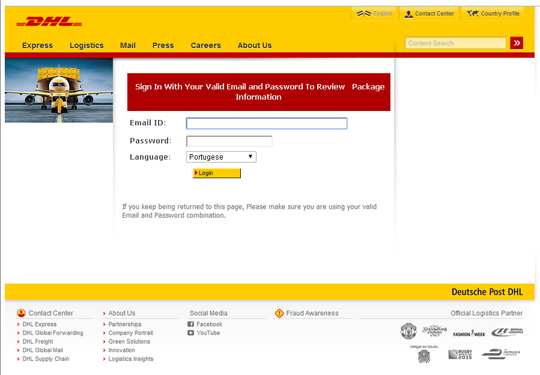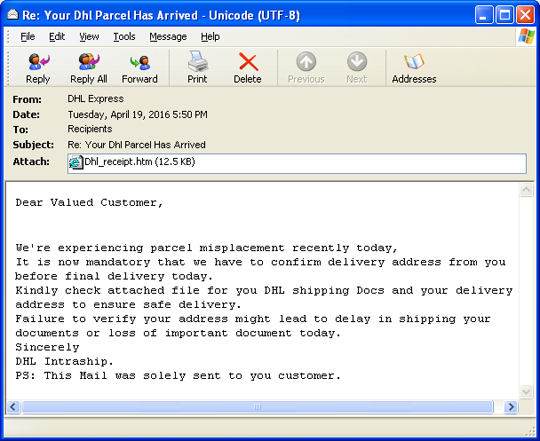HTML_FAKEDLH.P
Mal/Phish-A (Sophos), PWS:HTML/Dhishyal.A (Microsoft)
Windows


Threat Type: Trojan
Destructiveness: No
Encrypted: Yes
In the wild: Yes
OVERVIEW
Spammed via email, Downloaded from the Internet
This Trojan arrives on a system as a file dropped by other malware or as a file downloaded unknowingly by users when visiting malicious sites. It arrives as an attachment to email messages spammed by other malware/grayware or malicious users.
TECHNICAL DETAILS
16,473 bytes
HTML, HTM
No
20 Apr 2016
Connects to URLs/IPs
Arrival Details
This Trojan arrives on a system as a file dropped by other malware or as a file downloaded unknowingly by users when visiting malicious sites.
It arrives as an attachment to the following email messages spammed by other malware/grayware or malicious users:
Stolen Information
This Trojan sends the gathered information via HTTP POST to the following URL:
- http://www.{BLOCKED}batradeltd.net/ekpe/input.php
NOTES:
It tricks the user into entering their email ID and password using a fake DHL website:

SOLUTION
9.800
12.478.04
20 Apr 2016
12.479.00
21 Apr 2016
Step 1
Before doing any scans, Windows XP, Windows Vista, and Windows 7 users must disable System Restore to allow full scanning of their computers.
Step 2
Close all opened browser windows
Step 3
Scan your computer with your Trend Micro product to delete files detected as HTML_FAKEDLH.P. If the detected files have already been cleaned, deleted, or quarantined by your Trend Micro product, no further step is required. You may opt to simply delete the quarantined files. Please check this Knowledge Base page for more information.
Did this description help? Tell us how we did.


